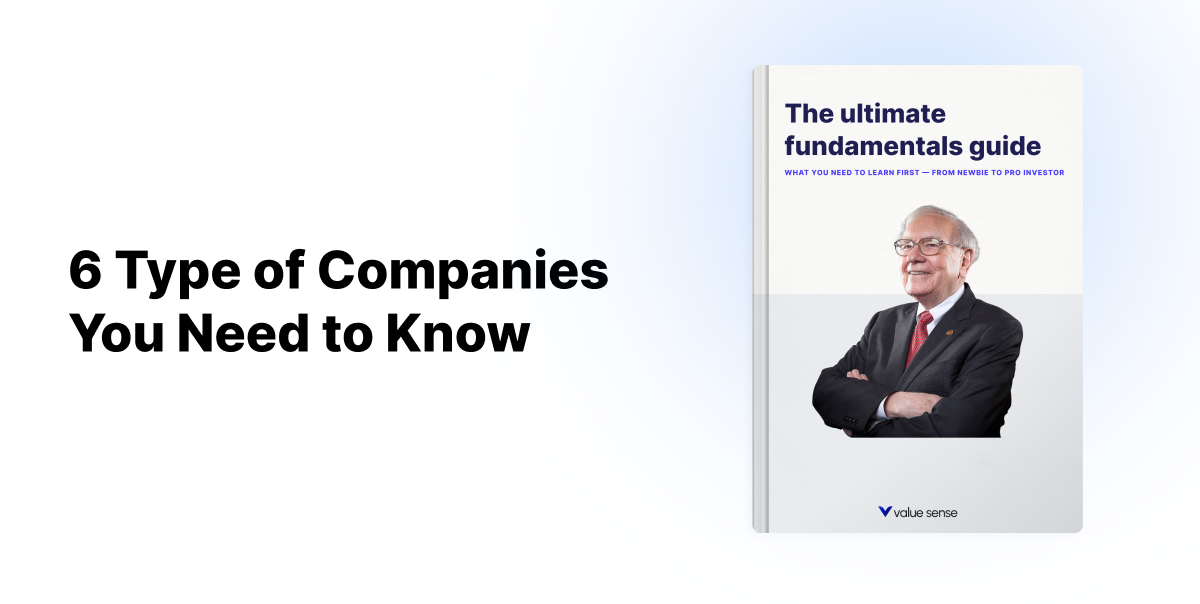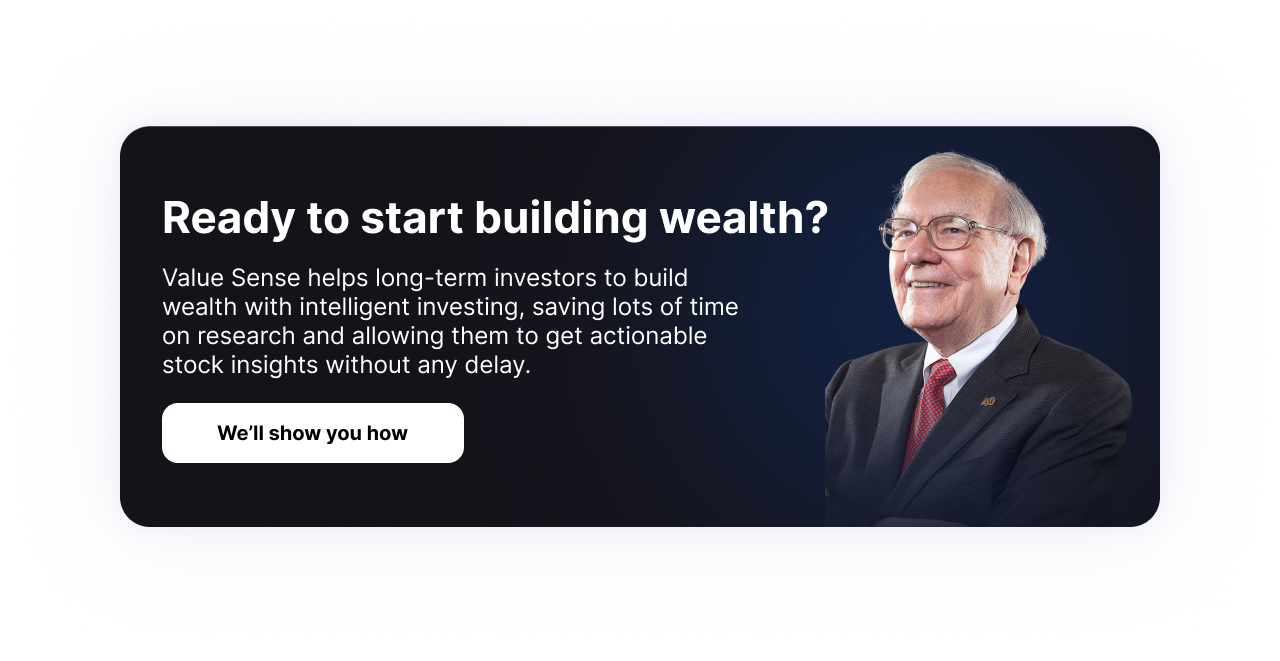6 Types of Companies You Need to Know

In his book, "One Up On Wall Street" Peter Lynch explains there are 6 types of companies.
Each type has varying potential returns, risks, and reasons that an investor may invest in them. We'll discuss the 6 types, examples of those companies, their risk profiles, what characteristics to look for, and signs that you should sell.
The 6 types of companies are:
- Slow growers
- Stalwarts
- Fast growers
- Cyclicals
- Turnarounds
- Asset plays
Slow Growers
Slow growers are large and mature companies. They are expected to grow slightly faster than the gross domestic profit (GDP). They grow at a rate of between 2 and 4%. Companies with slow growth can expect low increases in price.
Examples include Walmart (WMT), Coca-Cola (KO), and Colgate Palmolive (CL).
Slow growers are low risk, low reward.
If you are going to invest in a Slow Grower you are likely doing it for the dividend (increase your cash flow) and to preserve your wealth.
Things you should look for in a Slow Grower are:
- Increased earnings over the past 10 years.
- An attractive dividend yield.
- It has never reduced or suspended its dividend
- It raises its dividend in good times and bad
You should sell a Slow Grower if:
- The fundamentals have deteriorated.
- The company has lost market share for two consecutive years.
- The company has reduced spending on research and development.
- The company is making many acquisitions which are hurting its balance sheet. (i.e. they have spent all their cash or taken on large amounts of debt.)
Stalwarts
Stalwarts are multibillion-dollar companies that grow slightly faster than slow growers. Stalwarts should grow earnings at 10 to 12% per year. They offer good protection during recessions.
Examples include FedEx (FDX), Oracle (ORCL), and American Express (AXP).
Stalwarts are low risk, moderate reward. If everything goes right you could make 30 to 50%. If everything goes wrong you might lose 20%.
Things you should look for in a Stalwart are:
- It is selling at the low range of its PE
- That the stock hasn’t already risen a lot on its current run
- Potential growth catalysts
- It can maintain profits during recessions
You should sell a Stalwart if:
- The PE ratio strays too far from its normal range.
- The company's new products have poor results.
- It has a PE ratio much higher than its industry average.
Fast Growers
Fast growers are small, aggressive, new companies, that grow at 20%+ per year. This is where the 10-baggers live.
Examples include Tesla (TSLA), Google (GOOG), and Facebook (META).
Fast Growers are high risk, high reward.
If you are going to invest in a Fast Grower you are likely doing it for the potential of big returns.
If you want to invest in Fast Growers you should look for the following:
- Where and how it is going to continue to grow.
- The company should not have excessive amounts of debt.
- If there is a particular product you like that the company sells, make sure it is a major part of that business.
- The company has been able to duplicate their business model in multiple cities and markets, we want to see that expansion works.
- The PE ratio should be at or near the growth rate. (A PEG near 1)
You should sell a Fast Grower if:
- You think it is coming to the end of its expansion phase and rapid growth.
- There are 40 analysts giving the stock their top recommendations.
- 60%+ of the shares are held by institutions
- It has appeared in 3 or more of the top national magazines.
- Top executives or employers have quit to join rival companies.
- It has a PEG over 2.
- Sales have dropped by more than 3% in the last quarter.
Cyclicals
A Cyclical is a company whose profits rise and fall with changes in the economy. During booms, the company will grow its profits and prices will rise. During recessions, profits will shrink and prices will fall.
Examples include airlines (AAL), car manufacturers (F), resources (RIO), and energy producers (XOM).
Cyclicals can be low risk, high reward or high risk, low reward depending on how well you can anticipate the cycles. If you are right, you can 10x your money, if you are wrong, you could lose 90%.
If you are going to invest in a Cyclical you are likely doing it for a short term buy and sell. You want to get in at the beginning of the uptrend and get out before the cycle turns down. This is much easier said than done.
Things you should look for in a Cyclical are:
- An increase in sales
- Closing of inefficient plants or stores
- Reduced labor costs
You should sell a Cyclical if:
- It appears to be reaching the end of its upcycle. (It’s very hard to know when this is).
- When something has started to go wrong.
- Inventories are piling up.
- Union contracts are about to expire.
- Capital expenditures are increasing.
Turnarounds
Turnarounds are companies that are down in the dumps. Their growth may be zero or even negative. They may already be bankrupt so have a chance of going to $0. Turnarounds are companies that you believe are going to be able to right their troubles and start growing again. If a turnaround can fix its issues, then its stock price can rise very quickly.
Examples include Chrysler (FCA), Geico, and Best Buy (BBY).
Turnarounds are high risk, high reward.
Things you should look for in a Turnaround are:
- That the company has taken actions to improve its standing.
- The company has a plan.
- The plan appears to be working.
- The company is removing failing parts of the business or is going back to its ‘core’ business.
- An abundance of cash.
- Low debt.
- If they have debt it is funded debt and not unfunded or bank debt.
You should sell a Turnaround when:
- It has turned around.
- The company has become the company it was before, whether that be a fast grower, cyclical or other.
- Its debt has risen sharply.
- Inventories are rising twice as fast as the sales growth rate.
Asset Plays
An Asset Play is a company that is sitting on something valuable that Wall Street is overlooking. The asset could be something such as a mine, and oil field, cash, or property.
Lynch gives the example of Pebble Beach. In 1976 Pebble Beach was selling for $14.50 per share. This gave it a market cap of $25 million. Less than 3 years later 20th Century Fox bought Pebble Beach for $72 million or $42.50 per share. 20th Century Fox then went and sold the gravel pit (an asset) for over $30 million. The gravel pit alone sold for more than what the entire company was being sold for in 1976 which included hotels, two golf courses, and 2700 acres of land.
Asset plays are low risk, high reward. But only if you are sure of the value of the assets.
Things you should look for in an Asset Play are:
- Undervalued assets
You should sell an Asset Play if:
- Its debt has risen, which will reduce the value of the assets.
- The company is issuing additional shares at a discount to the market value.
- The company is selling assets for less than what they are worth.
- Institutional ownership has risen to over 60%.
Summary
One thing to remember is that a company won’t stay in the same category forever. A fast grower may become a stalwart than a slow grower. A company can also fit into several categories at the same time.
By placing a stock into the six types it allows you to understand what to look for.
You can check the key characteristics the company should be exhibiting such as room for expansion in a fast grower. It will also allow you to set reasonable expectations, you shouldn’t expect growth of 20% in a slow grower like Coca-Cola (KO). Lastly, it can help you identify reasons to sell.
If you would like to read more about the 6 categories of stocks described by Peter Lynch then I recommend picking up a copy of "One Up on Wall Street".

